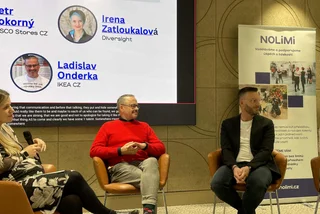Employment figures for the Czech Republic for the third quarter of 2020 were heavily impacted by the coronavirus pandemic. Nationwide, the unemployment rate rose to 2.9%, according to the Czech Statistical Office (ČSÚ), which uses International Labor Organisation (ILO) methodology
The Liberec region and Prague showed the highest increases in unemployment. Job losses were seen in particular in manufacturing, services, and arts and entertainment. On the other hand job increases occurred in public administration and information technology.
Unemployment
The seasonally adjusted average number of unemployed persons increased in the third quarter by 14,300 persons compared to the second quarter of 2020.
The total number of the unemployed aged 15 years or more increased by 39,000 persons, year on year, and reached 153,900 persons. The number of the unemployed women increased by 17,500 persons to 80,700 persons and the number of the unemployed men increased by 21,500 persons to 73,200 persons. The number of persons unemployed for one year and longer remained almost unchanged, year on year, and reached 30,800 persons.
The general unemployment rate in the age group 15–64 years increased by 0.8 percentage points to 2.9% in the third quarter of 2020.
As for regional comparison, the year on year increase of the unemployment rate was the highest in the Liberec region, by 1.7 percentage points to 3.6%; and in Prague by 1.5 percentage points to 2.7%.
The highest unemployment rates were in the Karlovy Vary region at 5.4%, the Ústí nad Labem region at 4.1%, and the Moravia-Silesia region at 3.9%. The lowest was in the South Bohemia region at 1.4%.
Employment
Total employment in the third quarter of 2020 of people over 15 years of age decreased by 72,900 persons year on year, or 1.4%, and reached 5.23 million persons.
The number of working men decreased by 15,500 persons and the number of working women by 57,400 persons. The number of employees decreased by 60,900 to 4.35 million. At the same time, the total number of the self-employed decreased by 12,600 persons due to a decrease in both the number of the self-employed with employees by 8,400 and the number of the self-employed without employees by 4,100.
In Q3 2020, the seasonally adjusted average number of employed persons increased by 1,100 persons, compared to the second quarter of 2020.
The development of employment in individual economic activities in the Czech Republic varied in the third quarter. In the sector of industry and construction, employment decreased year on year by 22,600 to 1.95 million, mainly due to a decrease in the number of working persons in manufacturing by 56,700. On the contrary, the number of working persons increased year on year in construction, by 22,900.
In the sector of services, total employment decreased by 47,700 to 3.15 million. The number of working persons decreased especially in the section of transportation and storage, by 30,900, and accommodation and food service activities, by 24,200.
A marked decrease of employment occurred also in the sector of arts, entertainment and recreation, by 12,300. On the other hand, the number of working persons markedly increased in public administration and security by 15,400, and in information and communication by 13.600.
In the sector of agriculture, forestry and fishing, the number of working persons stagnated. The number of the employed in the sector was 138,000. The number of service and sales workers and the major group of clerical support workers decreased, while the number of workers classified as professionals increased in the third quarter.
The employment rate, meaning the percentage of working persons in the age group of 15 to 64 years, in Q3 2020 decreased year on year by 0.9 percentage points to 74.4%. The male employment rate decreased by 0.4 percentage points to 81.7% and the female employment rate dropped by 1.4 percentage points to 66.7%.
Economic inactivity
The number of the economically inactive persons aged 15 years and higher increased by 54,900, year on year, to 3.60 million. The number of economically inactive women increased more markedly than the number of economically inactive men. The increase in women was by 45,600 and that of men by 9,400.
The number of economically inactive women aged up to 45 years increased by 45,000. By educational attainment, they were mainly women with higher education and women with secondary education without an A-level examination. The increase in the number of economically inactive men was caused by an increase mainly in the age group of 60 years and higher, up by 12,500.
Since April 2020, the Czech Statistical Office added to the standard Labor Force Sample Survey questions related to impacts of the coronavirus crisis on the labor market.
Data for the third quarter of 2020 show an increase of respondents’ optimism during summer months. A negative influence of health and social situation was perceived by less than a half of the self-employed persons, 44.7%, or by 15.5 percentage points less than in Q2 2020. This decrease took place in all economic activities.
Negative statements came most frequently from the self-employed in the section of accommodation and food service activities, at 82.5% in Q3 2020, the section of arts, entertainment and recreation, and further in the sections of other service activities and education.
Similarly as in the category of the self-employed, the share of negative impacts on the situation decreased in the group of employees in summer.
Compared to spring months, the share of employees perceiving negative influence of the coronavirus crisis decreased by 14.0 percentage points to 29.2%. The share of employees perceiving a negative influence of this crisis was the highest in accommodation and food service activities, at 20.9%, and in arts, entertainment and recreation.












 Reading time: 4 minutes
Reading time: 4 minutes 


























